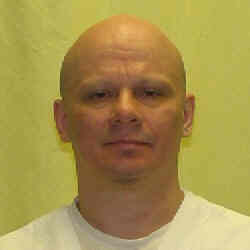
1960 - 2018
Robert J. Van Hook
Summary
Name:
Robert J. Van HookYears Active:
1985Birth:
January 14, 1960Status:
ExecutedClass:
MurdererVictims:
1Method:
Strangulation / Stabbing / MutilationDeath:
July 18, 2018Nationality:
USA
1960 - 2018
Robert J. Van Hook
Summary: Murderer
Name:
Robert J. Van HookStatus:
ExecutedVictims:
1Method:
Strangulation / Stabbing / MutilationNationality:
USABirth:
January 14, 1960Death:
July 18, 2018Years Active:
1985Date Convicted:
July 30, 1985bio
Robert Van Hook was born in 1960 and came of age during a turbulent era marked by cultural shifts and increasing social tensions in the United States. Not much is publicly known about his early childhood or upbringing, but court records and psychiatric evaluations reveal a troubled life marked by emotional instability, a long history of substance abuse, and deeply embedded psychological issues.
Van Hook had run-ins with the law from a relatively young age. By his teenage years, he had already started robbing men, with a specific focus on gay men, a pattern that would later be used against him in court. His criminal behavior was often accompanied by violence and manipulation, and it’s believed he developed a habit of targeting individuals he perceived as vulnerable.
His defense team would later argue that he suffered from mental illness, including personality disorders and trauma-related symptoms. However, these arguments were insufficient to sway the legal system in his favor, especially when weighed against the brutality of his crimes and his prior pattern of targeting LGBTQ+ individuals for personal gain. By the age of 25, Van Hook had developed a methodical approach to robbery and manipulation.
murder story
On February 18, 1985, Robert J. Van Hook entered a Cincinnati bar known for its LGBTQ+ clientele. There, he met 25-year-old David Self, and the two men eventually left together for Self’s Hyde Park apartment. Once inside, Van Hook launched a surprise attack. He strangled Self until he was unconscious, then took a knife from the kitchen and stabbed him to death. But the violence didn’t stop theRE as Van Hook mutilated Self’s body, ransacked the apartment, and stole valuables including jewelry.
The following day, Van Hook fled Ohio and made his way to Fort Lauderdale, Florida. It wasn’t until April 1, 1985, that he was arrested by Oakland Park police. After his arrest, he confessed to the killing and admitted that his motive had been to lure a gay man in order to rob him like something he had done multiple times since the age of 15.
Van Hook was indicted for aggravated murder and aggravated robbery. He pled not guilty by reason of insanity and waived his right to a jury trial, opting instead for a three-judge panel. The court found him guilty and sentenced him to death on July 30, 1985.
One of the most controversial aspects of Van Hook’s case was his use of the “gay panic defense.” His legal team argued that he was thrown into a state of violent emotional panic due to Self’s supposed sexual advances. However, this defense was ultimately rejected. The court pointed out that Van Hook had a history of targeting gay men and that his actions were premeditated, not impulsive.
For over three decades, Van Hook remained on death row while filing numerous appeals. His case made it all the way to the U.S. Supreme Court, which upheld his conviction. Ohio Governor John Kasich also rejected his clemency requests.
On July 18, 2018, Van Hook was executed by lethal injection at the Southern Ohio Correctional Facility in Lucasville. His final meal included double cheeseburgers, fries, strawberry cheesecake, a vanilla milkshake, and grapefruit juice. In his last statement, he apologized to the victim’s family and quoted a Norse prayer featured in the movie The 13th Warrior. He was pronounced dead at 10:44 a.m. EST.
The execution reignited controversy over Ohio’s death penalty protocols. Months later, a federal judge criticized the state’s lethal injection process as inhumane. Governor Mike DeWine, who took office in 2019, responded by placing an indefinite moratorium on executions in the state.